Becky Griffin Georgia Center for Urban Agriculture
This list is just a sampling of plants attractive to pollinators that grow well in Georgia. It contains a mixture of annuals, perennials, natives, exotics, herbaceous plants and shrubs.
Spring into Summer
Winter Honeysuckle (Lonicera fragrantissima)
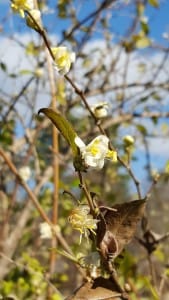
Spiderwort (Tradescantia spp.)
Wild Indigo (Baptisia spp.)
Summer into Fall
Bee Balm (Monarda spp. – especially Monarda punctate)
Catmint (Nepeta x faassengi)
Cosmos (Cosmos spp. – especially single petal types)
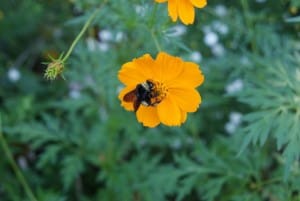
Hyssop (Agastache species – especially Agastche foeniculum and Agastache Mexican)
Blackeyed Susan (Rudbeckia hirta)
Wheat Celosia (Celosia spicata)
Eastern Purple Coneflower (Echinacea purpurea)
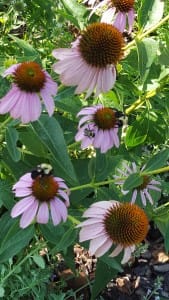
Lobed Tickseed (Coreopsis auriculata)
Sunflower (Helianthus spp. – especially Helianthus angustifolius and ‘Lemon Queen’)
Buttonbush (Cephalanthus occidentalis)
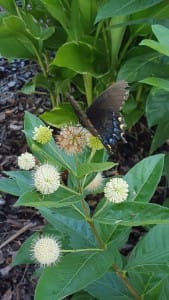
Mountain Mint (Pycnanthemum virginianum)
St. John’s wort (Hypericum frondosum)
Sweet Pepperbush (Clethra alnifolia)
Mexican Sunflower (Tithonia rotundifolia)
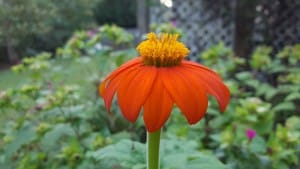
Baby Sage (Salvia microphylla ‘Hot Lips’)
Milkweeds (Asclepias spps.)
Hardy Lantana (Lantana camara ‘Ms. Huff’)
Yarrow (Achillea spp.)
Fall until Frost
Goldenrod (Solidago spp.)
Asters (Symphyotricum spp.)
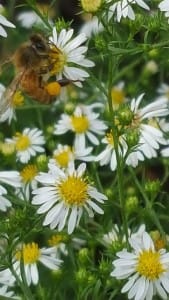
Joe-pye Weed (Eupatorium dubium)
Ironweed (Vernonia spp.)
Also consider adding food plants for the larval stages of butterflies – like parsley and bronze fennel.
Research done at the University of Georgia, North Carolina State, Colorado State University, Michigan State University and the Xerces Society was used in compiling these recommendations.
For more information on pollinator conservation see the following resources
Pollination: Plants for Year-round Bee Forage by Dr. Keith Delaplane, UGA
Bee Conservation in the Southeast by Dr. Keith Delaplane, UGA
Protecting Georgia’s Pollinators – the Georgia state pollinator protection plan
Pollinator Spaces Project – a project to increase pollinator habitat in community and school gardens in Georgia
The Eco-Friendly Garden: Attracting Pollinators, Beneficial Insects, and Other Natural Predators by Bethany Harris, Kris Braman, Bodie Pennisi, and Maria Putzke
Gardening for Bees – or Not! by Dr. Whitney Cranshaw, Colorado State University
Top 25 Perennial Pollinator Plants for North Carolina Piedmont by Debbie Roos, North Carolina State
Attracting Beneficial Insects with Native Flowering Plants by Fiedler, Tuell, Issacs, and Landis, Michigan State University